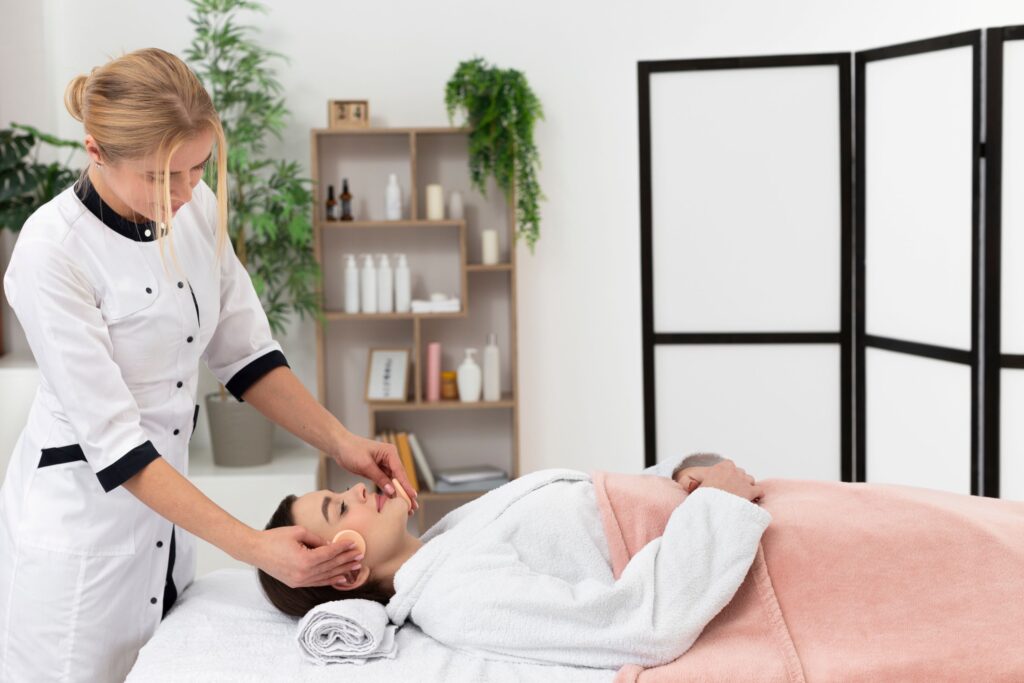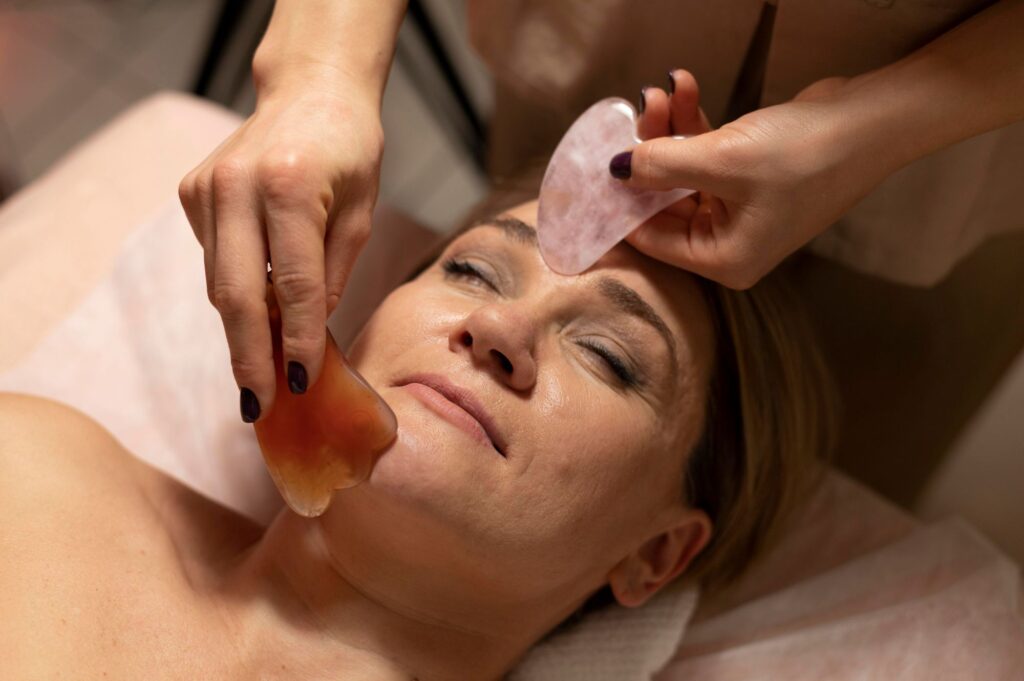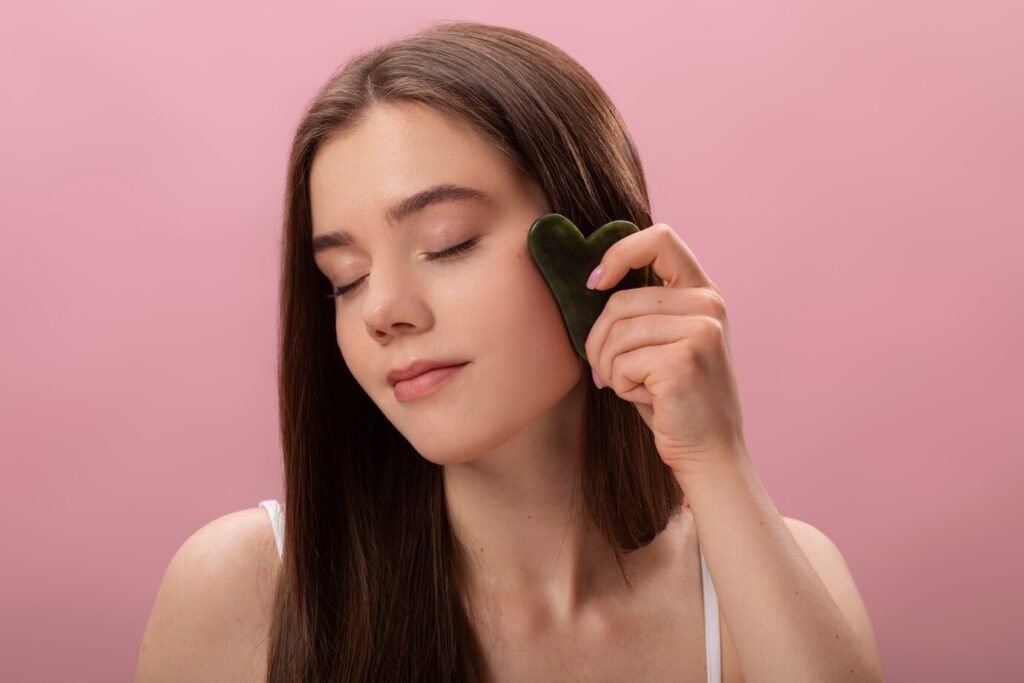Gua sha Soft Tissue Therapy
Acupuncture

Welcome to Gua sha Soft Tissue Therapy
Gua sha is a healing technique of traditional East Asian medicine. Sometimes called ‘coining, spooning or scraping’, Gua sha is defined as instrument-assisted unidirectional press-stroking of a lubricated area of the body surface to intentionally create transitory therapeutic petechiae called ‘sha’ representing extravasation of blood in the subcutis.
“Sha” is best defined as the red splotches or petechia that appear on the skin from rubbing the spoon or tool repeatedly over the affected area. Blood flow is decreased anytime we have a spasm or injury. Both lactic and uric acid can get trapped underneath the skin or within a bound up muscle due to the lack of drainage caused by the decreased blood flow.

One theory is that this metabolic waste turns crystalline and breaking these crystals with the spoon or guasha tool can lead to microscopic trauma to blood vessels. Signs of these metabolic waste products being released into the tissue become evident in the form of sha. This sha is a positive sign for an initial treatment as it lets you know changes are happening in the underlying muscle tissue and fascial.
Modern research shows Gua sha produces an anti-inflammatory and immune protective effect that persists for days following a single Gua sha treatment viagra prodej. This accounts for its effect on pain, stiffness, fever, chill, cough, wheeze, nausea and vomiting etc. After an acute illness or injury the amount of redness, or sha, will be heavy post treatment. It may even appear there is bruising to the area.


This bruising and redness will decrease over time. Repeated treatments will illicit less and less of the sha with each session. This gives us insight into the fact that something is being released and then cleared out from the area and is seen as another positive sign. The lessening of the sha should also be accompanied by a significant decrease in symptoms.
FAQ’s

10 K
satisfied Customer

Gua Sha is an ancient Chinese restorative technique that includes the use of a rounded-edge tool scraped along the skin for the activation of circulation and muscle relief. A slight pressure promotes the release of unsticking energy and the reduction of inflammation, hence the promotion of everything else. The most common uses of Gua Sha are relieving muscle pain, restoring movement, and enhancing overall health.
Gua Sha provides a variety of benefits, including pain remedy, muscle relaxation, improved circulation, and improved lymphatic flow. It will reduce chronic pain, reduce inflammation, and enhance recovery by promoting meridian energy flow. Gua Sha can also improve skin tone, eliminate toxins from the body, and enhance the body’s natural healing, ensuring overall wellness.
Gua Sha can potentially cause the skin to blanch, referred to as “Sha,” which results from an increase in circulation and the release of toxins. These marks are not harmful and should fade after a few days. Such evidence shows that the treatment is positively generating increased blood circulation and stimulating the healing process without any long-term ill effects.
The frequency of Gua Sha treatment varies from patient to patient, depending on their individual needs and conditions. Normal practice is that the treatments for ‘acute’ issues should generally be performed every week, whereas for ‘chronic’ ailments or for a maintenance plan, regular sessions once every 2-4 weeks may be scheduled. All treatment should be determined by the individual and not by the frequency of visits.
Gua Sha therapy typically does not cause any pain. You may feel a slight discomfort due to the pressure being applied during the treatment. However, the intensity of this sensation really depends on your own pain tolerance and the area being treated. Some people feel great after it, though others may feel a little bit of stiffness, which is normal and temporary.

